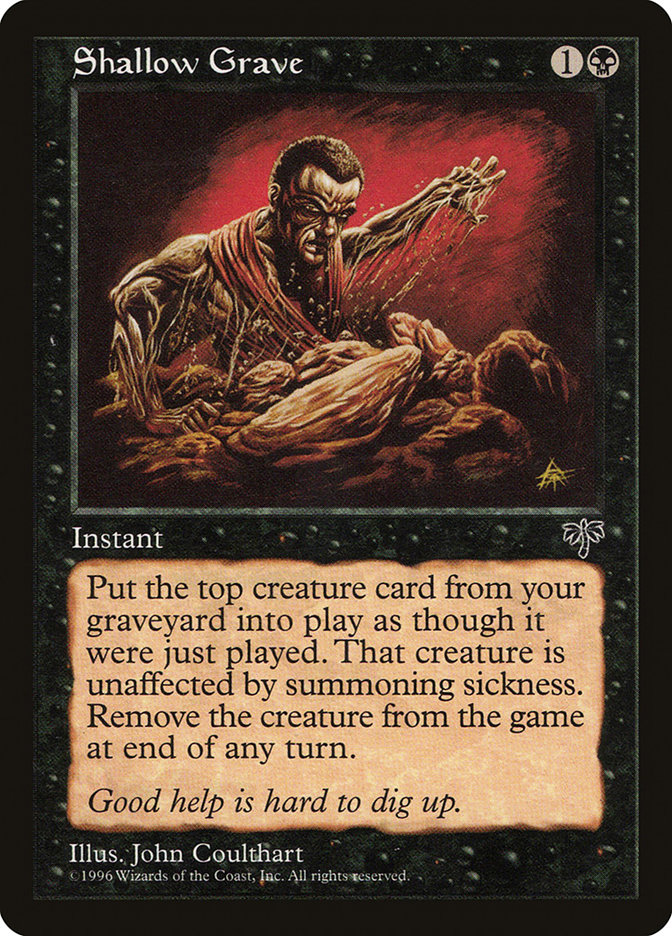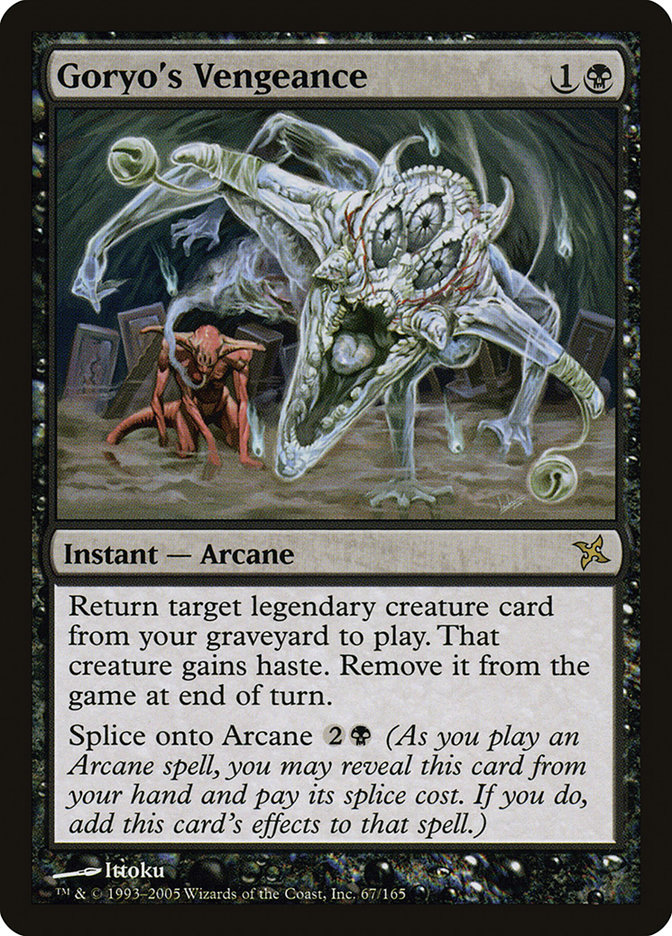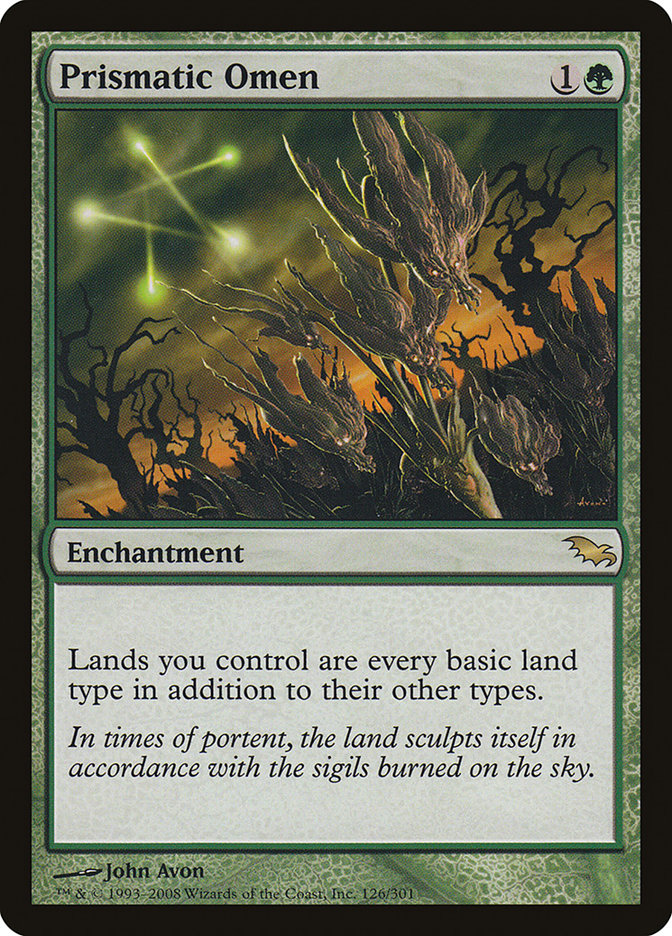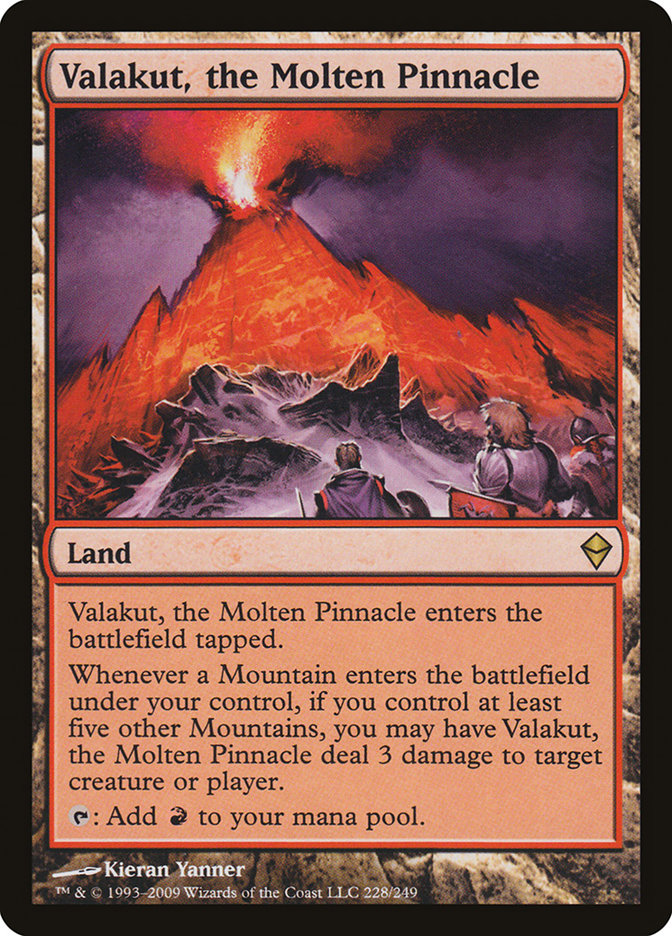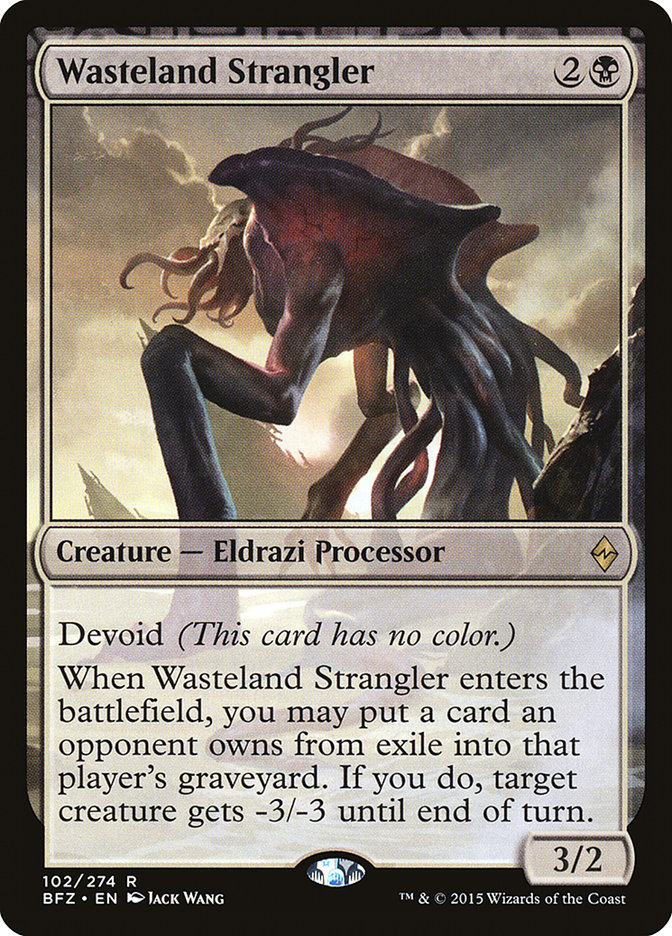I played in Grand Prix Seattle this weekend with boring old Shardless Sultai and promptly exited the tournament with a 3-3 record. Unfortunately, I didn’t
really have the time or means to test for Legacy between #GPINDY and #GPSEATAC, so I put no work into the Jace Fins deck I’d been writing about before the tournament. This past
Sunday, however, I did get a chance to chat with AJ Sacher who did play the deck in the tournament. While he didn’t have a great weekend either, he did
have some strong take aways from the experience and how to tweak the deck moving forward.
Here is where I would start after talking with him about his list:
Creatures (8)
Lands (19)
Spells (33)
- 4 Brainstorm
- 3 Goryo's Vengeance
- 4 Force of Will
- 4 Entomb
- 3 Shallow Grave
- 3 Lotus Petal
- 4 Ponder
- 3 Thoughtseize
- 3 Spell Pierce
- 2 Abrupt Decay
Sideboard

AJ spoke fondly of Lotus Petal and its ability to power out a first turn Jace, Vryn’s Prodigy. This aspect, alongside his much leaner set of kill
conditions (four targets and six reanimation spells) made Petal a far more logical inclusion than Dark Ritual.
He confessed his largest mistake in deck construction was shaving on mana sources, playing (I believe) seventeen lands. As a result, it wasn’t even his
opponent’s Deathrite Shamans that were directly beating him, but rather being choked on resources and not having the means to work around the disruptive
one-drop. Speaking of Deathrite Shaman, a big nod towards the split of Shallow Grave and Goryo’s Vengeance is Grave’s back door ability to play around the
aforementioned. If two big targets are ever in the graveyard, then Deathrite is unable to stop Shallow Grave from reanimating one of them.
The Show and Tell + Omniscience package in the sideboard is borrowed tech from Gerry’s Sneak and Show list, which skimped on a single couple of Sneak
Attack while playing two of the blue enchantment. I’m not exactly sure it’s right, but when sideboarding into a deck that wants to fight against graveyard
hate and other annoyances like Karakas, having the ability to just repeatedly jam your Griselbrands and Emrakul looks far more attractive than being forced
to brute force your way to a win with just one giant thing.
It’s easy in hindsight to say I wished I just jammed this deck, but I felt given my lack of preparation that Shardless Sultai was a good choice. Needless
to say, that’s just Magic.
#GPAtlanta is coming up, which grants some much appreciated reprieve from the pressure of preparing and picking a Constructed deck, but the week after is
#GPPITT, and as a result, Modern. Despite working fairly hard on the RPTQ two weeks ago, I could only clinch the second best result available (0-2 Drop),
but that doesn’t mean I haven’t been thinking about the format even though I haven’t locked in the tournament or purchased a plane ticket.
The absolute dominance of aggressive red decks and Burn would give the impression that folks are bound to have to adjust. I certainly have my eyes on a few
brews that I’m going to be working on over the next two weeks.
Last month I spent a fair amount of time working on Bring to Light Scapeshift decks. One of the lists I had included Prismatic Omen and four copies of
Valakut, the Molten Pinnacle in a style that was reminiscent of old Extended decks. While the deck was ultimately nothing special, it was shocking to me
how “unbeatable” Prismatic Omen was for decks like Grixis and the majority of other fair decks.
This experience–alongside some previous leg work I’ve done with Modern Loam strategies around the printing of Abbot of Keral Keep and a long plane ride
home–led me to this:
Creatures (7)
Lands (27)
Spells (26)

Needless to say, there’s a lot going on here. Since it hasn’t been around in a while: Prismatic Omen works incredibly well with Valakut, the Molten
Pinnacle. At any point you have a Valakut, an Omen, and 5+ lands, any land that enters the battlefield under your control will produce a Lightning Bolt,
scaling with more Valakuts and being absurd with fetchlands. Prismatic Omen strategies have encouraged the inclusion of a lot of lands, and incidentally,
because Valakut requires playing many red sources, both are aspects that Loam/Assault strategies require.
This deck has a lot of dangerous and high impact permanents between Assault and Prismatic Omen. They are both incredibly difficult to race and will
basically either immediately kill your opponent or shred their board position before eventually killing them. Fair decks and creature combos have a lot of
trouble getting anything substantial going in the face of either of these active engines.
Historically, a lot of Loam decks have been Jund or even four-color, but as I spoke about before, I like the idea of playing cards like Timely
Reinforcements as a result of the rise in these powerful red decks. Further, I’m a lot more excited to play with Path to Exile than simply Lightning Bolt
due to the Primeval Titans, Deceiver Exarchs, and Tarmogoyfs of the world.
As I often am, I’m concerned about this deck’s ability to hang with the super unfair strategies like G/R Tron and Amulet Bloom. It’s great that this gets
to play four Ghost Quarters, but those decks are so fast that I’m still a bit frightened to play against them. It’s possible that we could even include
Blood Moon in our sideboard since it only shuts off the Prismatic Omen part of our deck, which we could sideboard out in preparation for our hate card.
One card that I do love that this deck can support is Chalice of the Void, which shuts off very little of own deck but is absolutely devastating against
Burn and various fringe strategies.
This deck is fairly no-nonsense, consistent, and incorporates several powerful strategies. I’m excited to try it.
Something else that has interested me are the implications of the new Eldrazi creature type. Before I talk about really pushing that theme, however, I want
to dial it back and talk more specifically about Conduit of Ruin. Conduit is an incredibly powerful card in any type of strategy that could abuse it since
it is largely unaffected by countermagic and offers a huge discount on powerful cards.
I’ve played a bit with G/R Tron in the past and often noticed that Wurmcoil Engine was fairly inconsequential in most matchups besides Burn (which often
was too slow or got worked around with Skullcrack) and Jund. Pyroclasm has also gotten much weaker against the decks that you would typically be
interested in playing it against. Keeping these things in mind, let’s have a thought experiment with a blasphemous version of Tron that my editor may
refuse to publish:
Creatures (8)
- 1 Emrakul, the Aeons Torn
- 1 Platinum Emperion
- 1 Ulamog, the Ceaseless Hunger
- 4 Conduit of Ruin
- 1 Void Winnower
Planeswalkers (5)
Lands (22)
Spells (25)

While it’s great that we have a much higher “big impact” (aka: ten-drop+) threat density, I suppose Conduit isn’t offering much more than quick access to a
Platinum Emperion to try to lock up Burn in the first game or the ability to beat decks like Scapeshift in the first game with Void Winnower and Ulamog.
Something I like, however, is how awesome drawing Eye of Ugin is in this deck since it lets you deploy Conduit quickly.
Back when the Eldrazi were particularly rare, there was a card printed called Eldrazi Temple.
What can we really do with the new and cheaper Eldrazi when combined with the more powerful older lands to try and cheat them?
Here’s my first take at it:
Creatures (13)
Lands (22)
Spells (25)
- 3 Lightning Bolt
- 4 Chromatic Star
- 2 Slaughter Pact
- 2 Thoughtseize
- 4 Relic of Progenitus
- 4 Inquisition of Kozilek
- 2 Nihil Spellbomb
- 4 Faithless Looting
Sideboard

There are a lot of great options when choosing how to push the Processor mechanic, notably:
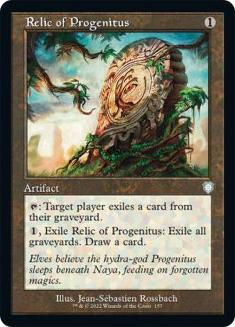
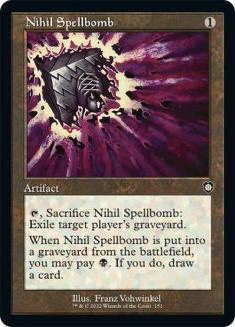



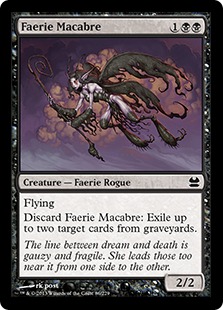
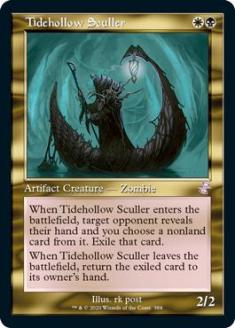
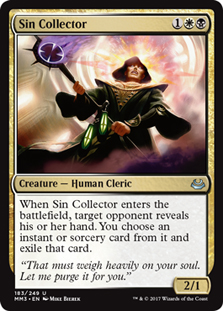
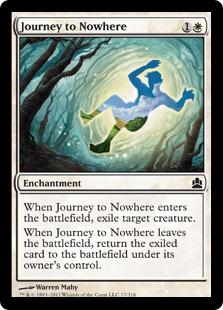

And many others. In fact, the red splash may just be worse than white due to how appealing Tidehollow Sculler is, but I chose to start with red for
Blackcleave Cliffs, Lightning Bolt, and Faithless Looting.
The star of this deck is Blight Herder, which is quite easy to turn on with Relic of Progenitus, Nihil Spellbomb, and all the other incidental delve and
Flashback nonsense that folks are interested in regardless. In the process of supporting Herder, we also get to play a bunch of graveyard hate that is
excellent against all the blue decks and various fringe strategies.
Further, Blight Herder is still effective through Remand and beyond that, quite ridiculous when it can be effectively played with two or three mana. Urborg
+ Eye of Ugin allows Blight Herder to be cast off two lands and Eye of Ugin + an Eldrazi Temple facilitates being played for three.
Wasteland Strangler is a solid card that is criminally underplayed in Standard due to how little it can actually kill and the difficulty of enabling it.
When it is always on, it kills creatures in just about every popular deck and costs one mana. I think it’s fair to say the Strangler may have legs.
The biggest question mark for me as this deck currently is configured is how to implement the Conduit package. Ruin Processor makes a lot of sense to me,
as it is effectively a build your own Thragtusk and only takes a single slot. I’m pretty sure we’re not supposed to go crazy and play an Emrakul as I
suspect it will still be fairly difficult to reach fifteen Eldrazi Bucks even with Blight Herder. That being said, I want more of a lategame threat density
than simply a single Ulamog, so I have two for now, although it looks strange and could very well be incorrect.
I believe there to be a great deal of untapped potential here. Siege-Gang Commander has been no joke of a card through Magic’s history, and Blight Herder
(Goblin tribal synergies aside) is nearly all upside, as he is undercosted, has a body fit for brawling with Tarmogoyf, and curves into massive trumps.
Beyond that, we get to play a bunch of colored lands, and as a result, a mix of real removal and disruption, which is a luxury that Tron has never been
afforded.
I’m actually excited to book a ticket to go play Modern. Who would have ever guessed that?


